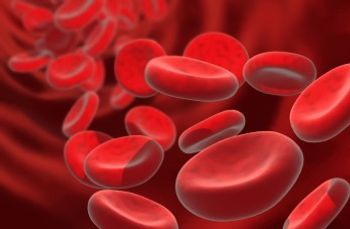
ASCO: Prolonged Survival in Multiple Myeloma Predicted Using Deep Sequencing
Multiparameter flow cytometry and deep sequencing were both able to accurately identify patients with multiple myeloma who were negative for minimal residual disease, a factor that was found to better predict prolonged survival compared with complete response as measured by traditional response criteria.
CHICAGO-Multiparameter flow cytometry and deep sequencing were both able to accurately identify patients with multiple myeloma who were negative for minimal residual disease, a factor that was found to better predict prolonged survival compared with complete response as measured by traditional response criteria.
Details about the study, which examined the prognostic value of deep sequencing for minimal residual disease (MRD), were presented by Joaquin Martinez-Lopez, MD, PhD, of the Hospital 12 de Octubre, Madrid, Spain, at the annual meeting of the American Society of Clinical Oncology (ASCO).
“With current treatments, complete response is achieved in about 30% to 50% of patients; however, most of these patients continue to relapse due to persistent minimal residual disease,” Dr. Martinez-Lopez said. “Therefore, more sensitive techniques are required to define response.”
For this reason, three new categories of complete response are now included in multiple myeloma: stringent complete response, immunophenotypic complete response, and molecular complete response.
Interestingly, independently of the technique used to identify MRD-flow cytometry, molecular techniques, or imaging techniques-patients have prolonged progression-free survival. In addition, each of these techniques has some limitations. For example, molecular investigation of MRD in multiple myeloma is highly specific and has high sensitivity but is time consuming, labor intensive, and has a low applicability, Dr. Martinez-Lopez said.
In this study, Dr. Martinez-Lopez and colleagues investigated using a sequencing-based method called LymphoSIGHT to identify clonal rearrangements of immunoglobulin genes-IGH-VDJ, IGH-DJ, and IGK-in diagnostic samples.
They studied 68 homogenously treated patients from the Spanish Myeloma Group GEM00 and GEM05 trials. The researchers studied bone marrow samples at diagnosis to identify the myeloma clonotype, and during follow-up to study MRD.
The sequencing assay detected a myeloma-specific gene rearrangement in 61 of 68 samples (90%). Seventy-seven samples were studied for MRD.
When comparing sequencing and flow cytometry, 34 out of 46 samples were positive for MRD using both techniques. Nine of the samples were negative for MRD and three samples were discordant. Of the three discordant patients, two were negative by sequencing and positive by flow cytometry and neither relapsed; one patient was positive by sequencing and negative by flow cytometry and later relapsed.
The researchers looked at the prognosis of achieving MRD negative status by sequencing and found that progression-free survival and overall survival were better in patients who achieved molecular complete response compared with those who did not (P = .02).
The results were similar when the researchers looked at prognosis of achieving MRD negative by flow cytometry. In this case, patients who achieved immunophenotypic complete response had improved progression-free survival (P = .001) and overall survival (P = .04) compared with patients that did not.
Finally, when the researchers limited the analysis to only those patients who achieved conventional complete response, progression-free survival and overall survival were improved in those patients found to be negative for MRD using sequencing compared with those patients found to be positive for MRD.
“Minimal residual disease assessment by sequencing is applicable to most multiple myeloma patients and has equivalent results to flow,” Dr. Martinez-Lopez said. “MRD assessment by sequencing is a useful method for patient risk stratification and can be used to determine molecular complete response in multiple myeloma.”
Abstract discussant Sagar Lonial, MD, of the Winship Cancer Institute at Emory University, stressed that it is important not to dismiss imaging techniques when discussing looking for MRD. By simply focusing on marrow sampling, disease that appears in other areas may be missed.
“In addition, if you don’t have a sample with enough plasma cells in it, you may get a false negative and that is a potential issue both with flow cytometry and deep sequencing as well,” Dr. Lonial said.
Dr. Lonial also added that the results from the deep sequencing analyses were very encouraging; however, when you look at the results compared with flow cytometry they were almost identical.
“In this small subset of patients, it is not clear that we got a significant benefit by doing the much more in-depth and perhaps laborious method of deep sequencing than perhaps we got over the currently available flow cytometry,” he said.
Despite that, Dr. Lonial added that the potential advantage of deep sequencing is that it may offer insight into clonal evolution.
Newsletter
Stay up to date on recent advances in the multidisciplinary approach to cancer.

















































































